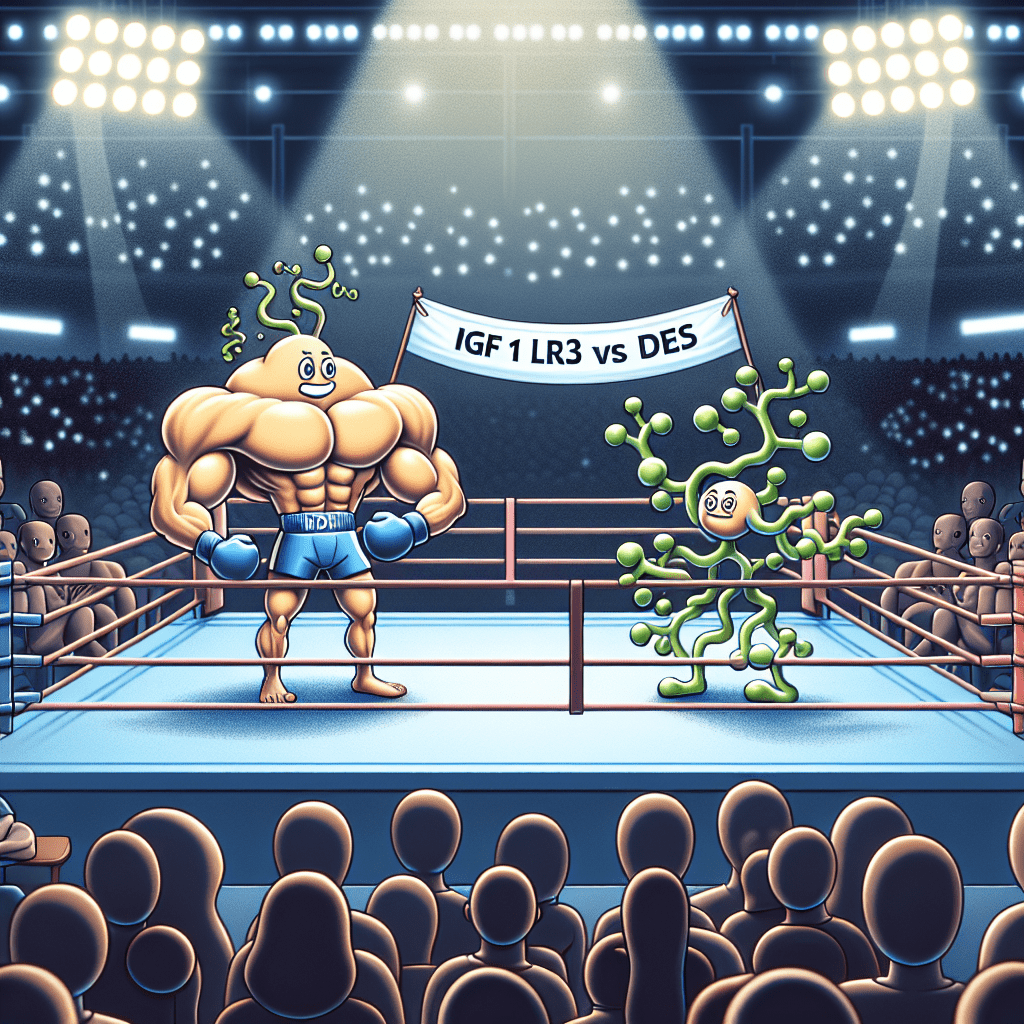
IGF 1 LR3 VS DES

The exploration of performance-enhancing compounds has seen significant interest, particularly in the realm of peptides like IGF-1 LR3 and IGF-1 DES. Both of these peptides are variants of the insulin-like growth factor 1 (IGF-1), a hormone crucial for growth and development. Despite their similarities, these two forms possess distinct characteristics and applications that make them appealing to athletes, bodybuilders, and those in the anti-aging community.
IGF-1 LR3, or Long R3 Insulin-like Growth Factor-1, is a modified version of IGF-1 extended with an additional 13 amino acids, enhancing its stability and bioavailability. This structure allows it to have a longer half-life, up to 20 to 30 hours, which means it remains active in the body for extended periods. As a result, IGF-1 LR3 is favored for its ability to promote muscle growth, improve fat metabolism, and accelerate recovery. Its prolonged activity permits less frequent dosing while providing sustained anabolic effects.
In contrast, IGF-1 DES is a truncated form of IGF-1, consisting of only the first 67 amino acids of the complete IGF-1 sequence. This shorter form leads to a reduced half-life, generally less than 30 minutes. Despite its short duration of action, IGF-1 DES is highly potent and specifically effective at targeting localized tissue areas. Athletes and bodybuilders often use it before workouts to directly stimulate muscle growth where it’s injected, offering a rapid yet intense growth response.
Choosing between IGF-1 LR3 and IGF-1 DES depends largely on the individual’s goals. For those seeking broad systemic effects and convenience, IGF-1 LR3 is advantageous due to its extended availability and ability to stimulate systemic muscle growth and recovery over days. However, for individuals aiming for localized muscle enhancement or needing quick responses, IGF-1 DES provides an ideal solution with its targeted action.
Conclusion
Understanding the distinctions between IGF-1 LR3 and IGF-1 DES is crucial for effective application. IGF-1 LR3 offers prolonged activity and systemic benefits, making it suitable for ongoing muscle development and metabolic improvement. On the other hand, IGF-1 DES provides targeted, immediate effects conducive to specific muscle group enhancement. Users must consider their precise objectives and the nature of the activity they are engaged in when selecting either peptide. It’s also important to be aware of the legal and health risks associated with peptide use and consult medical professionals as necessary.
FAQs
What are IGF-1 LR3 and IGF-1 DES used for?
IGF-1 LR3 is used primarily for systemic muscle growth and recovery due to its extended half-life. IGF-1 DES is favored for localized muscle growth and quick response times as a pre-workout aid.
How do their half-lives differ?
IGF-1 LR3 has a half-life of 20-30 hours, allowing for sustained anabolic effects, while IGF-1 DES has a much shorter half-life of 30 minutes, ideal for targeted, rapid action.
Which one should I use?
The choice depends on your goals. For systemic benefits, IGF-1 LR3 is beneficial. For localized growth, especially pre-workout, IGF-1 DES is preferable.
More information can be found here.
IGF-1 LR3 and IGF-1 DES are two popular forms of Insulin-like Growth Factor-1 (IGF-1) analogs, each with distinct characteristics and applications in the realm of performance enhancement and therapeutic uses. IGF-1 LR3 (Long R3 IGF-1) is a chemically modified version of IGF-1, with an extended half-life of approximately 20-30 hours due to the substitution of Arginine for Glutamic acid at the third position and additional modifications that inhibit its binding to IGF-binding proteins (IGFBPs). This modification enhances its stability and allows for more sustained anabolic effects, making it a sought-after choice among athletes and bodybuilders aiming for muscle growth and recovery. In contrast, IGF-1 DES is a truncated variant, missing the first three amino acids from the IGF-1 sequence, which results in a much shorter half-life of approximately 20-30 minutes. Despite its brief activity window, IGF-1 DES is favored for its acute, localized effect on muscle tissue, making it ideal for targeted applications like site-specific growth or post-injury rehabilitation. Both forms offer unique benefits, but their usage must be carefully managed to mitigate potential side effects, such as those related to insulin sensitivity and cellular proliferation.





